Dwarf Lousewort (Pedicularis centranthera)
In the Spring of last year (late May of 2022) I was hiking through an old Pinyon-Juniper forest here in Southwestern Colorado. This was at about 6500’ of elevation.
I kept seeing an odd ooking plant, usually growing beneath Juniper trees.
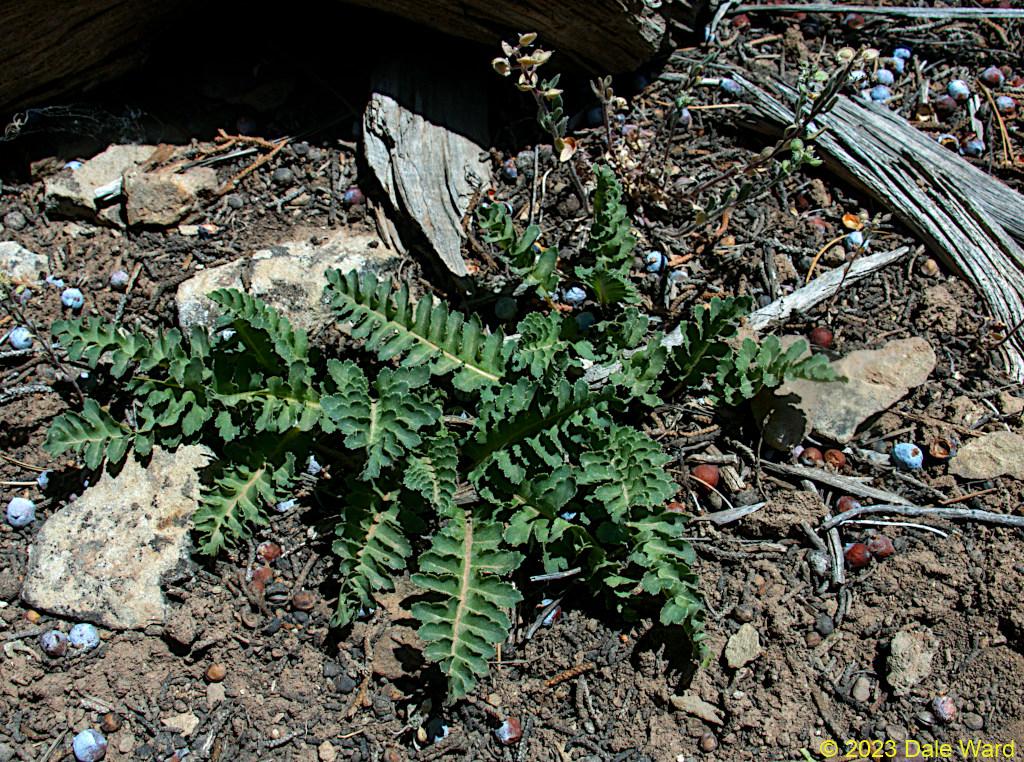 Dwarf Lousewort (_Pedicularis centranthera_), without flowers. The blue dots scattered on the ground are Juniper berries.
Dwarf Lousewort (_Pedicularis centranthera_), without flowers. The blue dots scattered on the ground are Juniper berries.
Its leaves looked a it like those of a fern, but had small spines on the margins. They were a bit like a thistle. But the plants were neither ferns, nor a thistles. I assumed that that they were some sort of strange non-native annual.
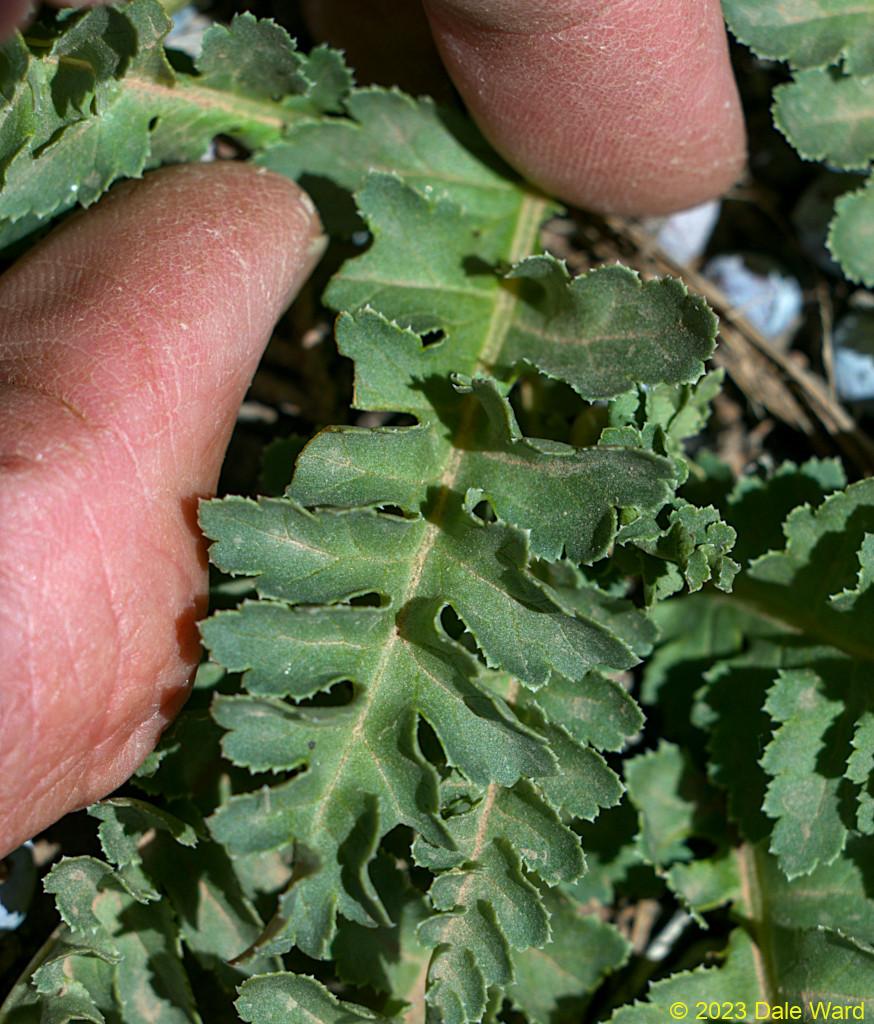 Dwarf Lousewort (_Pedicularis centranthera_) upper leaf surface, with my fingers for scale.
Dwarf Lousewort (_Pedicularis centranthera_) upper leaf surface, with my fingers for scale.
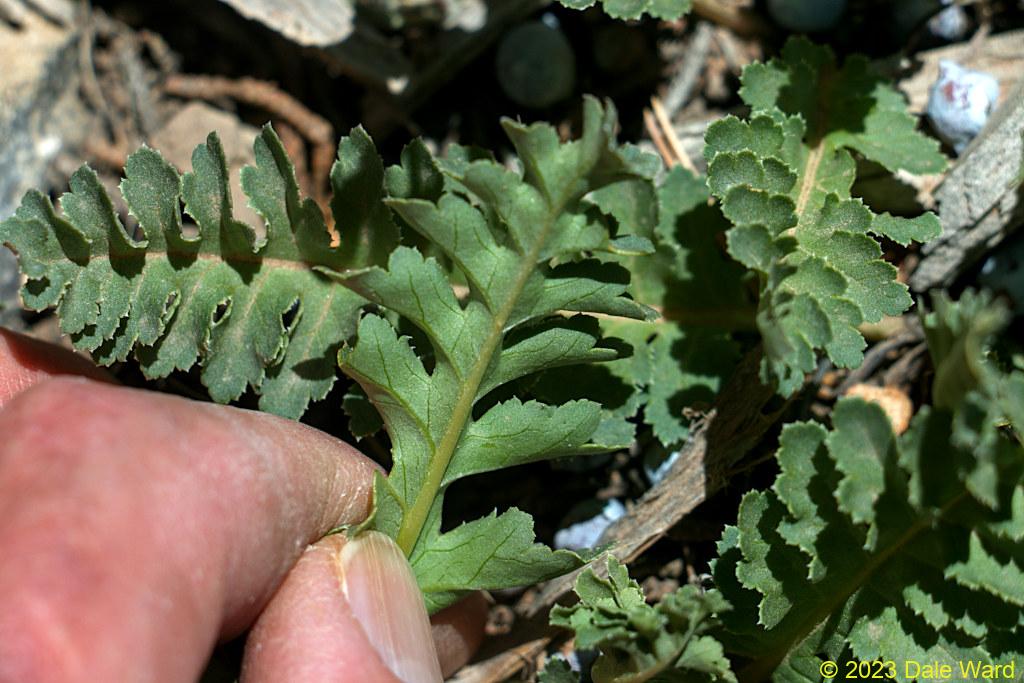 Dwarf Lousewort (_Pedicularis centranthera_) leaf underside, with my fingers for scale.
Dwarf Lousewort (_Pedicularis centranthera_) leaf underside, with my fingers for scale.
I decided that I would need to wait until the Mystery Plants came into flower to get an identification. Perhaps they would blossom during the monsoon rains?
The monsoons came, and went. The strange plants disappeared as the Summer progressed. I didn’t see any blossoms, and I assumed that these plant was just going to remain a mystery.
Then…in late April of this year (2023), I noticed some purple/white blossoms beneath the Junipers. It was the mystery plant - bloom!
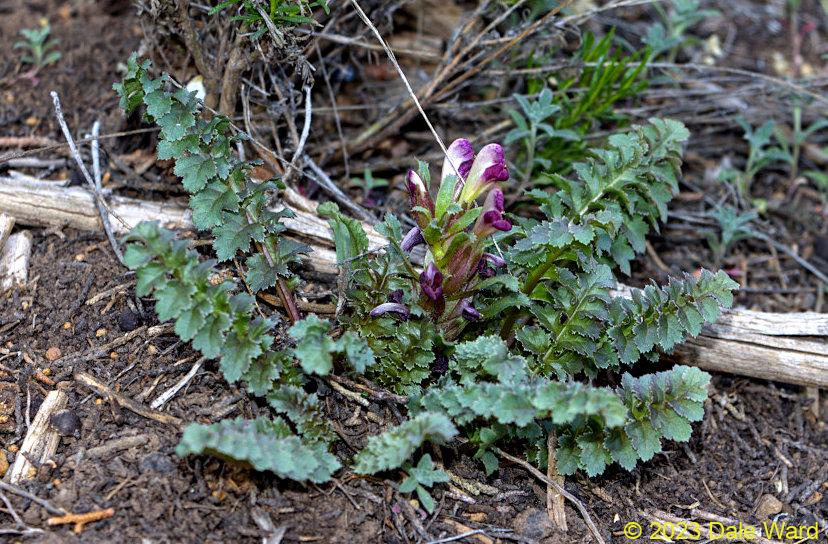 Dwarf Lousewort (_Pedicularis centranthera_) in bloom.
Dwarf Lousewort (_Pedicularis centranthera_) in bloom.
I had been about a month too late to see its bloom last year. The flowers did not look at all as I had expected. They looked sort of Snapdragon-ish to me. Or maybe even like a Broomrape of some sort?
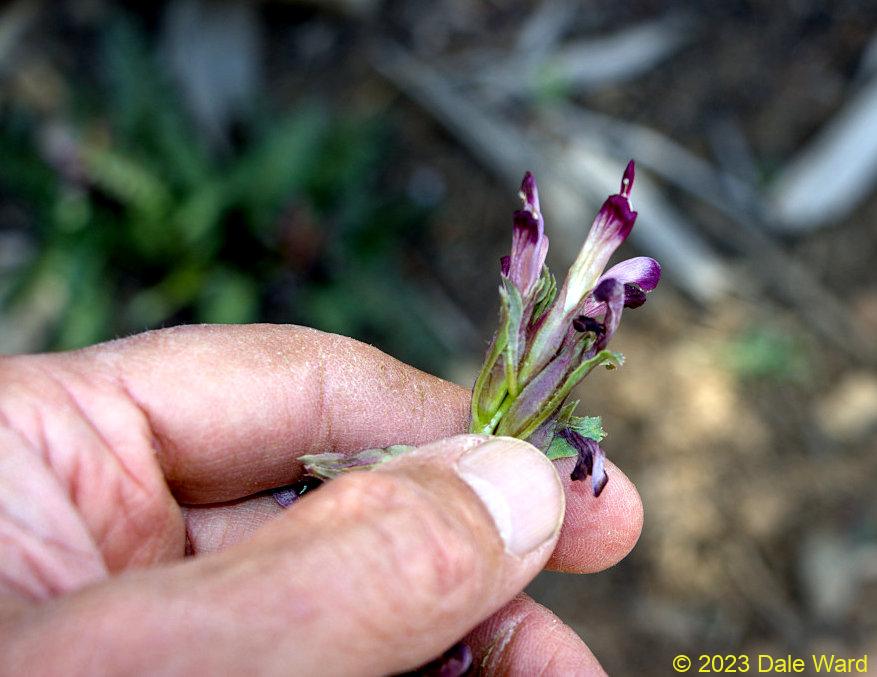 Closeup of Dwarf Lousewort (_Pedicularis centranthera_) flowers.
Closeup of Dwarf Lousewort (_Pedicularis centranthera_) flowers.
The leaves also had a purple-ish tinge to them, especially along their veins. I hadn’t seen that leaf coloration last year.
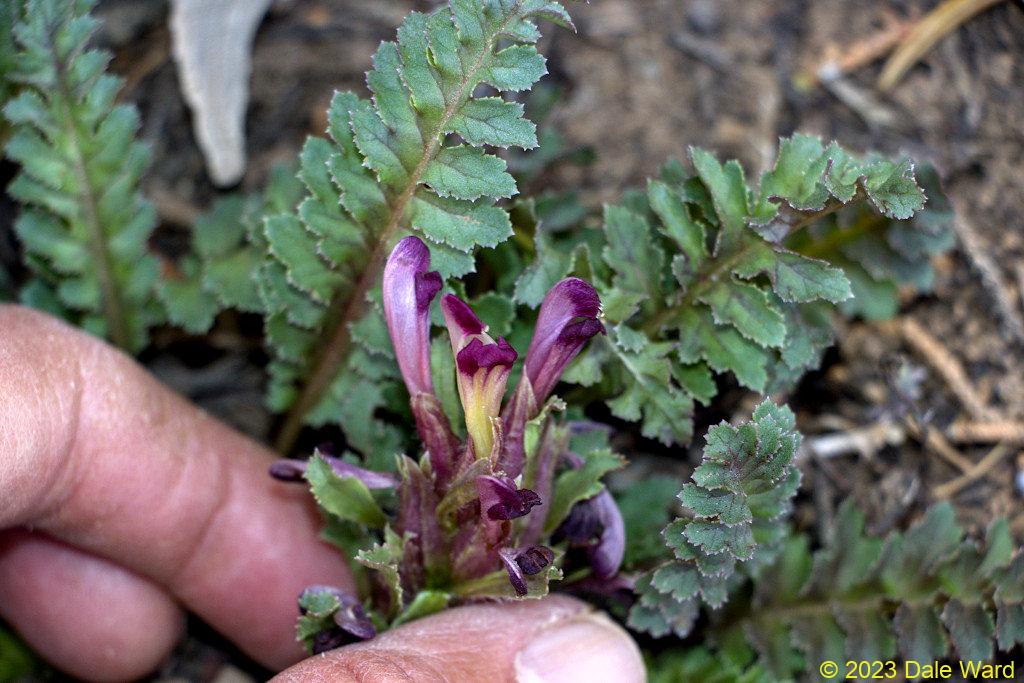 Dwarf Lousewort (_Pedicularis centranthera_) flowers and leaves, with my fingers for scale.
Dwarf Lousewort (_Pedicularis centranthera_) flowers and leaves, with my fingers for scale.
Now that I knew what the flowers looked like, I was able identify the plants - they were a native specis named “Dwarf Lousewort” (Pedicularis centranthera).
These plants are part of a worldwide group of 600 or more different species of Louseworts(!).
I was curious about why they plants called “Louseworts”. A “wort” is “…an herb or plant used as food or medicine…”. The word traces back through Old English, through Old forms of German, back to Proto-Indo-European.
The “Louse” part of its name was originally bestowed on other, Old World species of Pedicularis. Some sources say it’s because cattle and livestock grazing on Louseworts tended to become infested with lice. Perhaps livestock hungry enough to eat Lousewort is likely to be in poor condition? Other sources say it’s because “…the seeds were used to kill lice”.
These plants are partially parasitic on other plants. Their Lousewort’s roots can absorb water and nutrients from the soil, but they also penetrate the roots of nearby plants, allowing them to steal from their hosts. It’s interesting - the Albuquerque Herbalism page mentions that the same Pedicularis species may contain different alkaloids and other secondary compounds depending upon the host they’ve parasitized.
Addendum: It’s early May of 2023 - and almost all of the P. centranthera blossoms have already gone by. I can see why I missed the bloom last year.
Sources:
Epple, Anne Orth. 1995. A Field Guide to the Plants of Arizona. Falcon Press. ISBN 1560445637.
The Wildflowers of the United States Dwarf Lousewort page. Nice page! - the photos on their page are from Mesa Verde National Park, which is not too far from where I found the plants.
The Wildflowers of New Mexico’s Dwarf Lousewort page.
Wikipedia’s entry for Pedicularis.
The Albuquerque Herbalism Pedicularis page, as well as their “Going Deeper with Pedicularis” page.